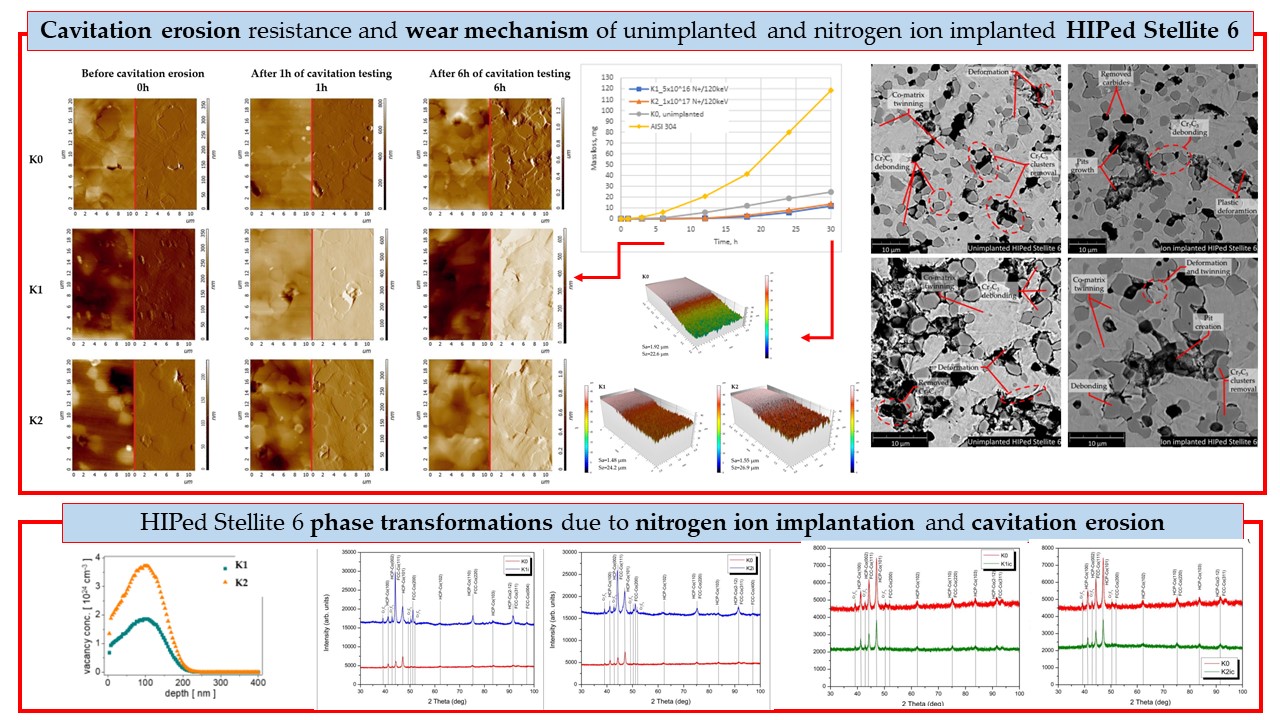From the wide range of engineering materials traditional Stellite 6 alloy exhibits excellent cavitation erosion (CE) resistance. In this work, the effect of nitrogen ion implantation of HIPed Stellite 6 on the improvement of CE resistance and both cobalt-rich matrix phase transformation due to nitrogen implantation and CE were stated. The CE resistance of stellites ion-implanted by 120 keV N+ ions two fluences: 5x1016 cm-2 and 1x1017 cm-2 were comparatively analysed with the unimplanted stellite and AISI 304 stainless steel. CE tests were conducted according to ASTM G32 with stationary specimen method. Erosion rate curves and mean depth of erosion confirm that the nitrogen implanted HIPed Stellite 6 two times exceeds the resistance to CE than unimplanted stellite, and has almost 10 times higher CE reference than stainless steel. The X-ray diffraction (XRD) confirms that HIPed Stellite 6 nitrogen ion implantation favours transformation of the ɛ(hcp) to γ(fcc) structure. Unimplanted stellite ɛ-rich matirx is less prone to plastic deformation than γ and consequently, increase of γ phase effectively holds carbides in cobalt matrix and prevents Cr7C3 debonding. This phenomenon elongates three times the CE incubation stage, slows erosion rate and mitigates the material loss. Metastable γ structure formed by ion implantation consumes the cavitation load for work-hardening and γ → ɛ martensitic transformation. In further CE stages, phases transform as for unimplanted alloy namely, the cavitation-inducted recovery process, removal of strain, dislocations resulting in increase of fcc phase. The CE mechanism was investigated using a surface profilometer, atomic force microscopy, SEM-EDS and XRD. HIPed Stellite 6 wear behaviour relies on the plastic deformation of cobalt matrix, starting at Cr7C3/matrix interfaces. Once the Cr7C3 losing their restrain, are debonding and removed. Carbides detachment creates cavitation pits which initiate cracks propagation through cobalt matrix, the loss of matrix phase and CE proceeds with a detachment of massive chunk of materials.

